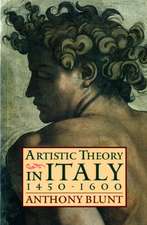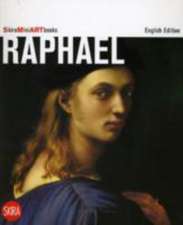The Court Art of Friedrich Sustris: Patronage in Late Renaissance Bavaria: Visual Culture in Early Modernity
Autor Susan Maxwellen Limba Engleză Paperback – 12 iun 2019
| Toate formatele și edițiile | Preț | Express |
|---|---|---|
| Paperback (1) | 325.70 lei 6-8 săpt. | |
| Taylor & Francis – 12 iun 2019 | 325.70 lei 6-8 săpt. | |
| Hardback (1) | 822.91 lei 6-8 săpt. | |
| Taylor & Francis – 4 mai 2011 | 822.91 lei 6-8 săpt. |
Din seria Visual Culture in Early Modernity
- 22%
 Preț: 324.16 lei
Preț: 324.16 lei - 18%
 Preț: 895.95 lei
Preț: 895.95 lei -
 Preț: 311.37 lei
Preț: 311.37 lei - 9%
 Preț: 949.21 lei
Preț: 949.21 lei -
 Preț: 312.12 lei
Preț: 312.12 lei -
 Preț: 356.69 lei
Preț: 356.69 lei -
 Preț: 313.67 lei
Preț: 313.67 lei -
 Preț: 432.98 lei
Preț: 432.98 lei - 12%
 Preț: 343.55 lei
Preț: 343.55 lei - 25%
 Preț: 324.16 lei
Preț: 324.16 lei - 25%
 Preț: 769.92 lei
Preț: 769.92 lei - 13%
 Preț: 338.33 lei
Preț: 338.33 lei - 17%
 Preț: 259.98 lei
Preț: 259.98 lei - 22%
 Preț: 326.11 lei
Preț: 326.11 lei -
 Preț: 471.08 lei
Preț: 471.08 lei - 28%
 Preț: 826.84 lei
Preț: 826.84 lei - 26%
 Preț: 819.90 lei
Preț: 819.90 lei - 28%
 Preț: 878.42 lei
Preț: 878.42 lei - 28%
 Preț: 829.69 lei
Preț: 829.69 lei - 25%
 Preț: 325.43 lei
Preț: 325.43 lei - 25%
 Preț: 853.03 lei
Preț: 853.03 lei - 13%
 Preț: 338.33 lei
Preț: 338.33 lei - 25%
 Preț: 824.40 lei
Preț: 824.40 lei - 13%
 Preț: 338.33 lei
Preț: 338.33 lei - 25%
 Preț: 826.01 lei
Preț: 826.01 lei - 30%
 Preț: 772.60 lei
Preț: 772.60 lei - 18%
 Preț: 1017.63 lei
Preț: 1017.63 lei - 30%
 Preț: 768.62 lei
Preț: 768.62 lei - 13%
 Preț: 338.33 lei
Preț: 338.33 lei - 25%
 Preț: 771.13 lei
Preț: 771.13 lei - 22%
 Preț: 324.16 lei
Preț: 324.16 lei - 30%
 Preț: 772.76 lei
Preț: 772.76 lei - 11%
 Preț: 347.33 lei
Preț: 347.33 lei - 26%
 Preț: 765.84 lei
Preț: 765.84 lei -
 Preț: 489.26 lei
Preț: 489.26 lei - 25%
 Preț: 822.91 lei
Preț: 822.91 lei - 12%
 Preț: 300.09 lei
Preț: 300.09 lei - 26%
 Preț: 820.73 lei
Preț: 820.73 lei - 25%
 Preț: 829.69 lei
Preț: 829.69 lei - 28%
 Preț: 826.84 lei
Preț: 826.84 lei - 30%
 Preț: 776.03 lei
Preț: 776.03 lei
Preț: 325.70 lei
Preț vechi: 371.88 lei
-12% Nou
Puncte Express: 489
Preț estimativ în valută:
62.32€ • 65.23$ • 51.87£
62.32€ • 65.23$ • 51.87£
Carte tipărită la comandă
Livrare economică 31 martie-14 aprilie
Preluare comenzi: 021 569.72.76
Specificații
ISBN-13: 9781138376380
ISBN-10: 1138376388
Pagini: 250
Dimensiuni: 174 x 246 x 18 mm
Greutate: 0.47 kg
Ediția:1
Editura: Taylor & Francis
Colecția Routledge
Seria Visual Culture in Early Modernity
Locul publicării:Oxford, United Kingdom
ISBN-10: 1138376388
Pagini: 250
Dimensiuni: 174 x 246 x 18 mm
Greutate: 0.47 kg
Ediția:1
Editura: Taylor & Francis
Colecția Routledge
Seria Visual Culture in Early Modernity
Locul publicării:Oxford, United Kingdom
Cuprins
Contents: Introduction: Bavarian ducal patronage in the 16th century; From Italy to Augsburg, c.1560-1573; Princely patronage: Wilhelm V and Trausnitz castle, 1573-1579; The court architect: Sustris and St Michael's church, 1579-1596; The Kunstintendant in Munich: court commissions and the residence, 1580-1596; Lost palaces and paper traces; Appendix; Bibliography; Index.
Notă biografică
Susan Maxwell is Associate Professor of Art History at the University of Wisconsin Oshkosh, USA.
Recenzii
'Thanks to Prof. Maxwell’s beautifully researched and compellingly written study, Sustris’ role in shaping all aspects of the art at the Bavarian court is clearly and convincingly explained... a superb, and timely, book.' Jeffrey Chipps Smith, University of Texas at Austin, USA
'... Maxwell’s book is a major step forward in the study of Sustris. In addition, as an English-language publication, written to attract a broader readership, it should introduce this significant artist and his era to a new audience.' Renaissance Quarterly
'It is a struggle to explain why it has taken so long for the first monograph to be published on Friedrich Sustris, one of Northern Europe’s most gifted and influential artists in the late sixteenth century... this book is important as the first comprehensive overview in English of Sustris’s career and of Duke Wilhelm’s patronage. It will undoubtedly inspire new research, and be a point of reference for those already interested in this still largely unexplored field.' Burlington Magazine
'Maxwell's book is a valuable contribution to the history of central European art, bringing to an English-speaking audience new material about Sustris, Wittelsbach patronage, and the other artists working in the ambit of the Bavarian court.' Sixteenth Century Journal
'... Maxwell’s book is a major step forward in the study of Sustris. In addition, as an English-language publication, written to attract a broader readership, it should introduce this significant artist and his era to a new audience.' Renaissance Quarterly
'It is a struggle to explain why it has taken so long for the first monograph to be published on Friedrich Sustris, one of Northern Europe’s most gifted and influential artists in the late sixteenth century... this book is important as the first comprehensive overview in English of Sustris’s career and of Duke Wilhelm’s patronage. It will undoubtedly inspire new research, and be a point of reference for those already interested in this still largely unexplored field.' Burlington Magazine
'Maxwell's book is a valuable contribution to the history of central European art, bringing to an English-speaking audience new material about Sustris, Wittelsbach patronage, and the other artists working in the ambit of the Bavarian court.' Sixteenth Century Journal
Descriere
The Court Art of Friedrich Sustris is the first monograph on the court artist and artistic director of Duke Wilhelm V. Sustris's drawings inspire a broader inquiry into early modern patronage and collecting practices. Incorporating original archival material into close analysis of surviving projects, this study examines the meanings and functions of court art at the crucial moment when artists and patrons were establishing artistic theories in sixteenth-century Munich.










